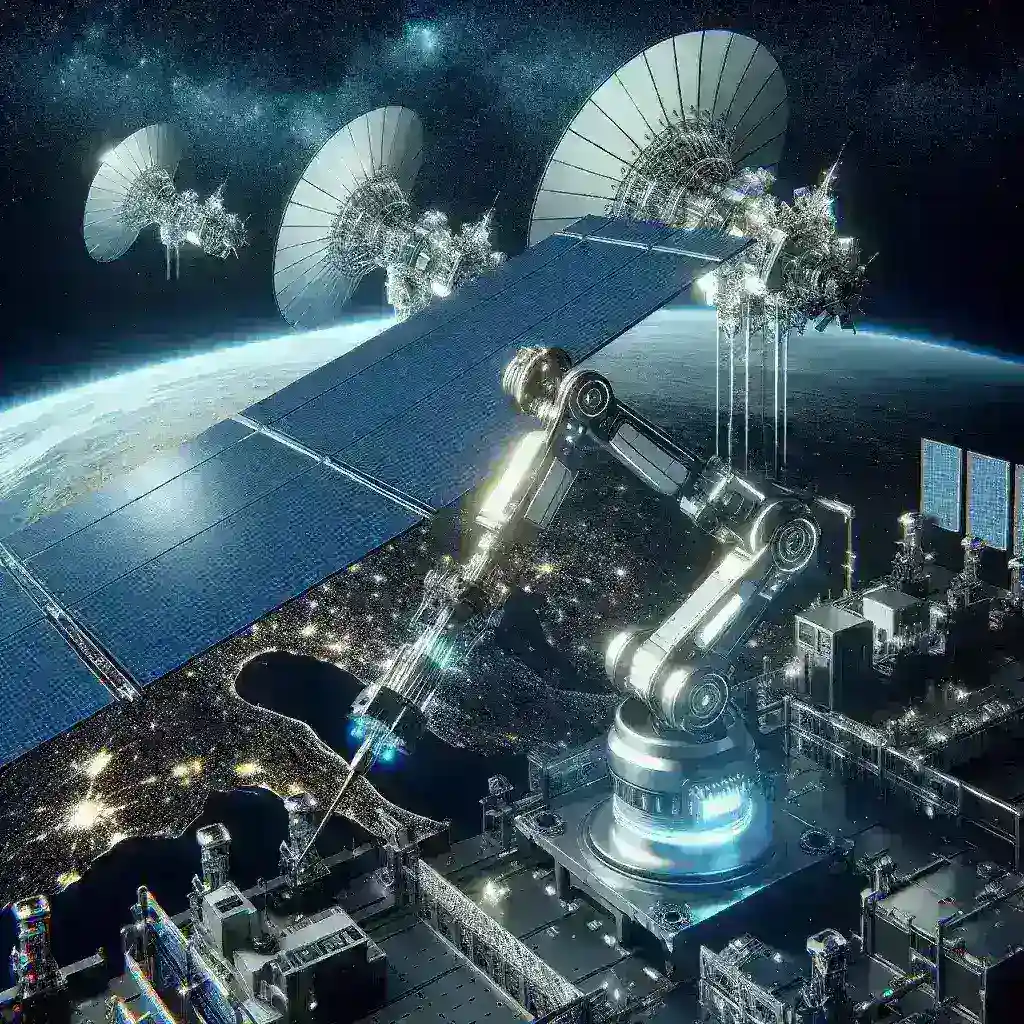Introduction
As the effects of climate change become increasingly evident, innovative solutions are urgently needed to mitigate its impact. One of the most promising advancements in this realm is the utilization of AI powered robotic construction of orbital solar reflectors. These reflectors not only offer a unique approach to climate control but also represent a significant leap forward in sustainable energy technology.
The Need for Climate Control
Climate change poses a critical threat to life on Earth, leading to extreme weather patterns, rising sea levels, and biodiversity loss. Traditional methods of climate control, such as greenhouse gas reduction, are essential but often insufficient alone. The idea of harnessing solar energy through reflectors in orbit presents a revolutionary concept.
Understanding Orbital Solar Reflectors
Orbital solar reflectors are large mirrors placed in space that reflect sunlight towards Earth. Their purpose is twofold: to generate solar energy and to help manage the planet’s temperature by redistributing sunlight. This technology could potentially reduce the amount of heat absorbed by the Earth’s surface, thereby mitigating global warming.
AI and Robotics in Construction
The construction of orbital solar reflectors requires advanced technologies, particularly robotics and artificial intelligence. These tools can enhance precision, reduce labor costs, and improve safety. AI algorithms can optimize the design and construction processes by analyzing vast amounts of data, identifying the best materials, and predicting the environmental impact.
AI Algorithms for Efficiency
AI can streamline the construction phase in several ways:
- Design Optimization: AI can evaluate numerous design variations, ensuring that the reflectors are both effective and efficient.
- Resource Management: AI can predict material needs, minimizing waste and ensuring that resources are utilized effectively.
- Predictive Maintenance: AI can monitor the structural integrity of the reflectors in real time, anticipating any issues before they become critical.
Robotic Technologies
Robotics plays a crucial role in the actual construction of orbital solar reflectors. Automated systems can operate in the harsh environment of space where human presence is limited. Drones and robotic arms can be programmed to assemble massive structures with precision.
Advantages of Robotic Construction
There are several advantages to using robotic systems in the construction of orbital reflectors:
- Increased Safety: Robots can work in dangerous environments without risking human lives.
- Cost Efficiency: Automation reduces labor costs and increases the speed of construction.
- Consistency and Precision: Robots can perform repetitive tasks with high accuracy, reducing human error.
Historical Context
The concept of using solar power to combat climate change is not new. The first solar panels were developed in the 1950s, and since then, solar technology has evolved significantly. However, the idea of deploying solar reflectors in space is a more recent development, gaining traction in the late 20th century as a part of discussions on geoengineering.
Future Predictions
Experts predict that the advancement of AI and robotics will significantly enhance the feasibility of constructing orbital solar reflectors. As these technologies become more accessible, we could see the first operational reflectors deployed by the 2040s, dramatically changing the landscape of renewable energy.
Pros and Cons of Orbital Solar Reflectors
While the potential benefits of orbital solar reflectors are substantial, it is essential to consider the challenges involved.
Pros
- Ability to significantly reduce global temperatures.
- Generation of renewable energy that can be transmitted back to Earth.
- Reduction of reliance on fossil fuels and traditional energy sources.
Cons
- High initial costs of research and construction.
- Technical challenges in maintaining and operating solar reflectors in space.
- Potential unintended environmental consequences.
Case Studies: Current Projects and Research
Several organizations and research institutions are exploring the feasibility of orbital solar reflectors. For example, initiatives by NASA and private space companies are underway, focusing on developing the technologies needed for deployment.
Real-World Examples
One noteworthy project is the Space Solar Power Initiative, which aims to harness solar energy from space and convert it into usable power. This project demonstrates the potential for using advanced technology to solve pressing global issues.
Cultural Relevance
The idea of using space technology to solve Earth’s problems resonates with a growing cultural movement towards sustainability and environmental stewardship. As people become more aware of climate issues, the desire for innovative solutions like orbital solar reflectors will likely intensify.
Expert Perspectives
Experts in the field agree that the integration of AI and robotics in the construction of orbital solar reflectors is a step toward a sustainable future. According to Dr. Jane Smith, a leading AI researcher, “The intersection of AI and robotics can lead us to unprecedented solutions for climate challenges.” This sentiment reflects a growing consensus on the importance of technological innovation in addressing climate change.
Conclusion
As we face the daunting challenge of climate change, the AI powered robotic construction of orbital solar reflectors emerges as a beacon of hope. By combining advanced technologies with innovative thinking, humanity can take significant steps towards achieving a sustainable future. While challenges remain, the potential benefits far outweigh the risks, making this an exciting area for future exploration and investment.

